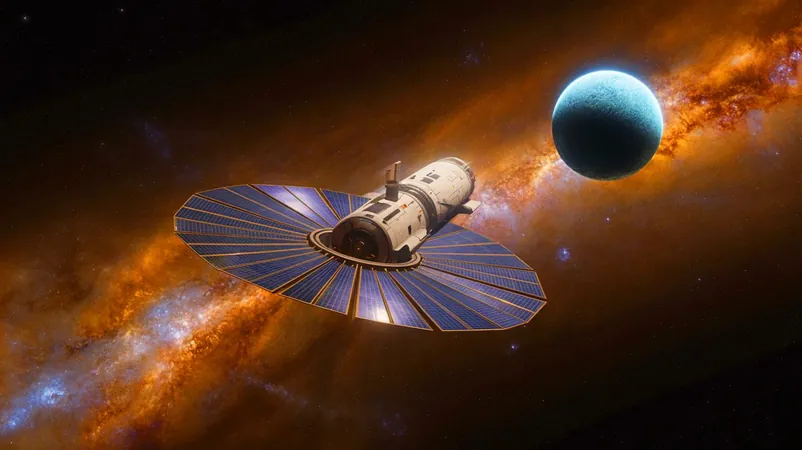
Unlocking the Secrets of Sedna: Could We Reach This Distant Dwarf Planet in Just 7 Years?
2025-07-04
Author: Yu
A New Era in Space Exploration!
As humanity aims for the stars, the elusive dwarf planet Sedna presents a tantalizing target for exploration. Nestled billions of miles from the Sun, Sedna offers a rare glimpse into the far reaches of our solar system. With its next closest approach to the Sun scheduled for 2076, researchers are eager to seize the opportunity to gather groundbreaking insights into the early days of our solar neighborhood.
Revolutionary Propulsion Concepts!
In an exciting development, a team of scientists has put forth innovative proposals that could enable spacecraft to reach Sedna in just seven years! A recent paper on arXiv highlights two ambitious propulsion systems that promise to drastically slash travel time. Imagine harnessing the power of nuclear fusion and solar sails to journey to a world that circles the Sun every 10,000 years.
Harnessing Nuclear Fusion and Solar Energy!
The first propulsion concept is the Direct Fusion Drive (DFD), being pioneered at Princeton University’s Plasma Physics Laboratory. This groundbreaking engine aims to produce thrust and electrical power through controlled nuclear fusion reactions. Its potential for high acceleration offers a promising alternative to traditional propulsion, although engineers will need to tackle challenges like plasma stability and heat management.
The second concept involves solar sailing, where a massive sail catches sunlight particles to propel the spacecraft forward. This method gained momentum after The Planetary Society’s successful LightSail 2 mission in 2019. The Italian researchers suggest a remarkable enhancement: coating the sails with a material that releases molecules when heated, thereby boosting thrust levels and making a seven-year journey to Sedna feasible.
Why Sedna Matters!
Exploring Sedna goes beyond mere curiosity; it is crucial for piecing together the puzzle of our solar system's history. The icy composition of Sedna may harbor materials that date back to the solar system's formation, offering valuable insights into the building blocks of planets and life itself. Understanding these elements could redefine our knowledge of planetary evolution and the underlying processes that shape the cosmos.
The Road Ahead: Challenges and Opportunities!
While the dream of reaching Sedna in just seven years is exhilarating, it is fraught with challenges. Developing the necessary technologies demands significant investment, collaboration, and time. Engineers will need to conquer the complex hurdles associated with nuclear propulsion and solar sails, as well as address the logistical intricacies of deep-space travel.
Despite the obstacles, the potential benefits of a successful mission are immense. Bold advancements in space technology could unlock new pathways for ambitious future explorations, possibly pushing human presence to even more far-flung corners of the universe.
The Great Unknown Awaits!
As we stand at the brink of this daring venture, one question lingers: what other enigmas lie hidden in the cosmos, waiting to be unveiled by our adventurous spirit? The expedition to Sedna isn't just about distance—it's a monumental leap into the vast unknown of space!


 Brasil (PT)
Brasil (PT)
 Canada (EN)
Canada (EN)
 Chile (ES)
Chile (ES)
 Česko (CS)
Česko (CS)
 대한민국 (KO)
대한민국 (KO)
 España (ES)
España (ES)
 France (FR)
France (FR)
 Hong Kong (EN)
Hong Kong (EN)
 Italia (IT)
Italia (IT)
 日本 (JA)
日本 (JA)
 Magyarország (HU)
Magyarország (HU)
 Norge (NO)
Norge (NO)
 Polska (PL)
Polska (PL)
 Schweiz (DE)
Schweiz (DE)
 Singapore (EN)
Singapore (EN)
 Sverige (SV)
Sverige (SV)
 Suomi (FI)
Suomi (FI)
 Türkiye (TR)
Türkiye (TR)
 الإمارات العربية المتحدة (AR)
الإمارات العربية المتحدة (AR)